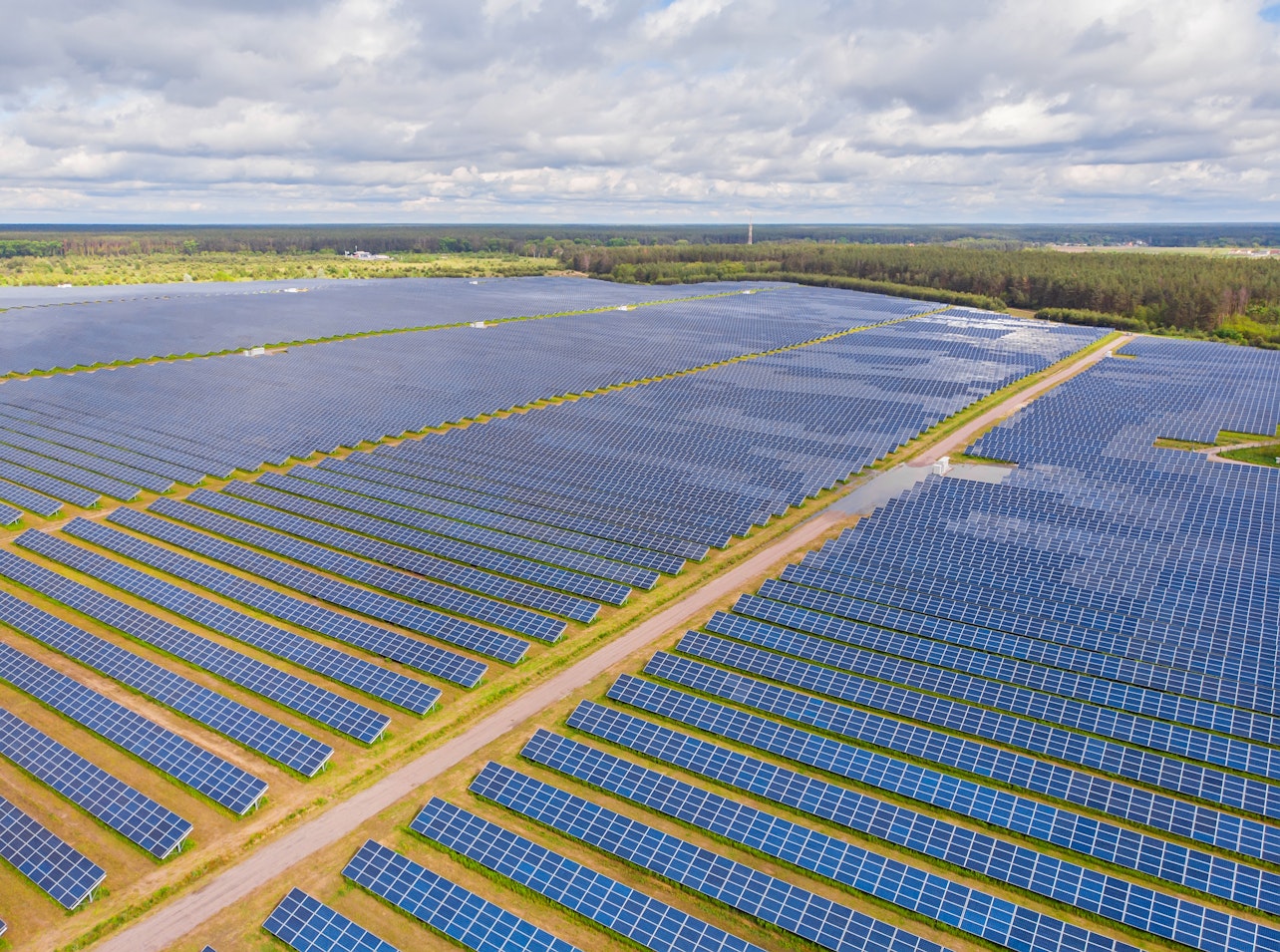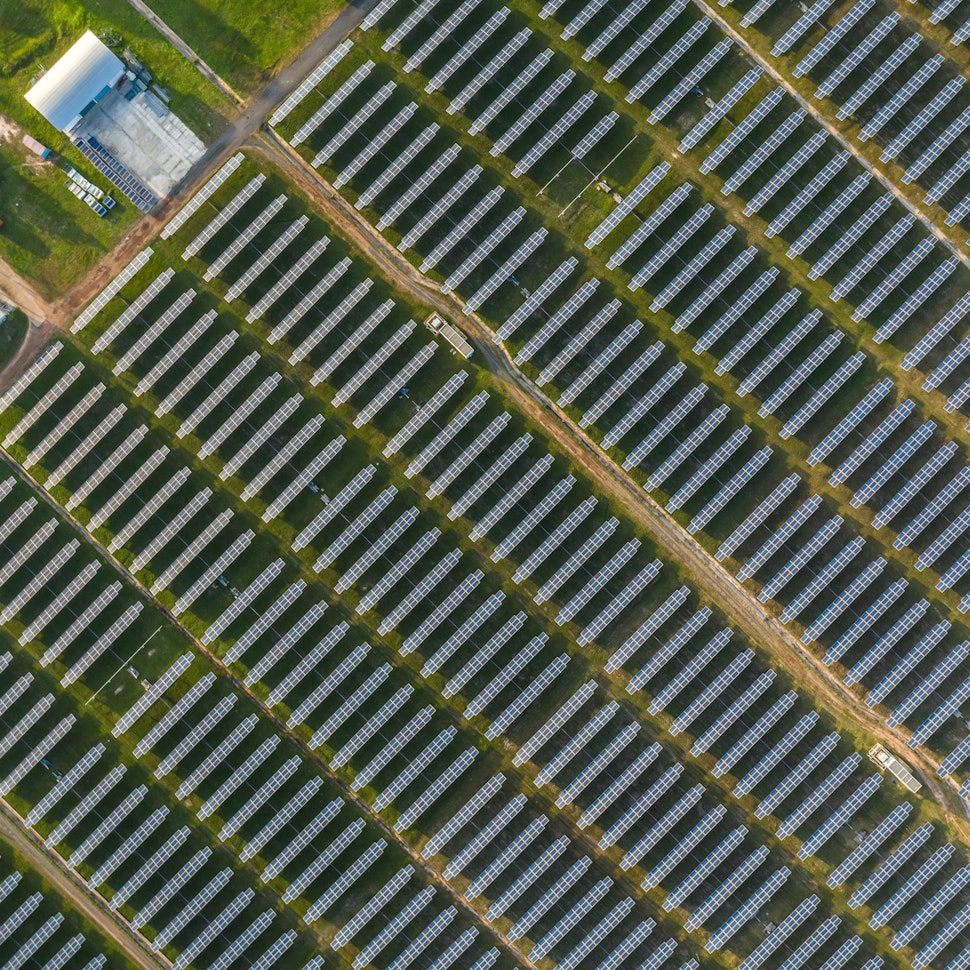- Solar energy blog
- The largest PV plants in Brazil
The largest PV plants in Brazil
Learn more about Brazil’s rise in the renewable sector, including its top PV plants and the future of its solar energy market.


Alicia Herrera
Territory Manager - Spain & Portugal
Alicia Herrera Alonso started her journey at RatedPower as an Ssales Development Representative intern and has grown into her current role as Territory Manager. She brings first-hand knowledge of the renewable energy sector and a passion for helping companies design and optimize their solar projects.

Content
Brazil is rapidly emerging as a leader in renewables in Latin America and on the global stage. As the largest energy market in Latin America, Brazil has clear goals for its renewable future and is projecting that by 2031, renewables will constitute about half of the country’s energy makeup.
Despite this shift towards cleaner alternatives, oil and gas will remain important to Brazil’s energy sector. This is largely due to Brazil being the leading oil producer in Latin America, and its pre-salt fields are anticipated to continue contributing heavily to its overall production output.
The distribution sector presents an attractive prospect for investment, and foreign-owned firms are already playing a pivotal role here. The interest of international entities in Brazil’s renewable space is another good example of the direction that the country is heading.

The solar market in Brazil
If we look specifically at Brazil’s solar market, we’ll see that despite economic challenges in 2022, the sector has been experiencing significant growth. In 2022, the country’s installed solar energy capacity reached 24.08 GW, and this figure is projected to increase as they plan to have a staggering 1.2 million solar photovoltaic (PV) systems installed by 2024. This represents a substantial increase from previous years.
This growth has been great for the job market, too. Brazilian job creation within the renewable energy sector ranks second globally, just behind China. A large portion of these jobs are within the field of solar energy, another good signal for the industry’s growth.
PV panels are becoming increasingly popular among Brazilians due to declining costs and government incentives that promote their use. Community-based solar projects have also seen an upward trend. The ability for multiple households to share a single system is attractive, and these projects are making solar more accessible than ever in Brazil.
Brazil’s geographical advantages are having an impact, as well. Brazil’s proximity to the equator makes it one of the most promising regions on Earth for harnessing sunlight efficiently, and the growing demand for PV panels from homeowners and businesses across Brazil has reflected this.

Additionally, Brazil has some of the highest global insolation levels and receives around 2,200 hours of sunlight annually. This has resulted in distributed capacity accounting for almost three quarters (71%) of all PV capacity nationwide, with states like São Paulo, Minas Gerais, and Rio Grande do Sul leading the way.
If we look to the future, Brazil’s solar energy market is expected to grow from 34.20 GW by the end of 2023 to 97.46 GW by 2028. This estimate of the market almost tripling in size over five years represents an annual growth rate (CAGR) of 23.30%.
Other forecasts have suggested that the solar market in Brazil could increase by around 1 GW each year until 2026, and some even predict it could eventually surpass hydropower as Brazil’s primary energy source by 2040.
The Brazilian government’s commitment has been crucial for this growth. Policies like net metering allow customers to earn credits for selling their excess electricity back to the grid. New laws and regulations have been set for future distribution generation units and extending benefits for existing producers until 2045.
Although there is an increasing tendency towards distributed generation, Brazil also counts on large centralized installations to provide large quantities of photovoltaic energy to power many households.

Here we take a look at some of the biggest PV plants across Brazil contributing to the 8,2 GW centralized solar energy it produces:
The five largest PV plants in Brazil
Janaúba Solar Complex
The Janaúba Solar Complex is a massive solar facility located in the Minas Gerais region of Brazil. It was developed by Elera Renováveis and has an impressive capacity of 1.2 GW, making it one of the biggest PV plants not just in Brazil but all over the world. The project spans approximately 3,000 hectares and comprises 20 individual solar parks.
São Gonçalo
The São Gonçalo (SGL) solar facility is a project that consists of 2.2 million solar panels. With 608 MW in operation and 256 MW under construction, the completed facility has a projected overall capacity of 864 MW. Situated in the state of Piauí, the SGL site is approximately 12,000,000 m². Since it connected to the grid at the beginning of 2020, SGL has undergone a series of extensions and is currently the biggest PV plant in South America under construction.
Futura 1 solar complex
The Future 1 solar complex, located in Juazeiro City, Bahia state, Brazil, officially started commercial operations in 2023. The project cost Eneva $639.6m and employed 3,000 employees to construct it. It generates 692MW, which is enough to meet the energy needs of 1.7 million people.
Sol do Cerrado solar park
Sol do Cerrado Solar Park, situated in Jaíba, Minas Gerais, comprises over 1.4 million solar panels and has a capacity of 766 MW. The project was created by Vale, the Brazilian mining company, and cost US$590 million.
Helio Valgas
Helio Valgas Solar PV Park is a project brought to life by the renewable energy generation company Mercury Renew that has an estimated capacity of 650MW. This ground-mounted solar project is based in Minas Gerais, will be constructed in a single phase, and is projected to start producing energy in 2023.

Other notable PV plants in Brazil
Sol do Sertão Solar PV Park
Another large PV plant in Brazil is the Sol do Setao Solar PV Park. Located in Bom Jesus da Lapa, Bahia, this plant results from a collaboration between EDF Renewables and Canadian Solar and a $380 million investment. It has a capacity of 475 MW and is one of Brazil’s most important solar power plants.
SSM1&2 Solar PV Park
The SSM1&2 Solar PV Park is a relatively new project, completed in 2022. Voltalia Energia do Brasil Ltd developed the plant in Rio Grande do Norte, and it boasts a capacity of 320 MW. The scale of SSM1&2 Solar PV Park is just as impressive, with approximately 930,000 solar panels spanning a vast area of 1,000 hectares.
Nova Olinda Solar Plant
The Nova Olinda Solar Plant has been active since its completion in 2017 and consists of two parks: Nova Olinda 12 and Nova Olinda 14. It has a peak capacity of 292 MW. To put that number into perspective, that translates roughly to enough energy to power 300,000 homes. Alba Energia e Automacao and Enel Green Power are the two companies behind the plant, and the park is an important contributor to Brazil’s energy transition.
Ituverava Solar Facility
Financial backing from the Bank of China and Santander helped bring the Ituverava Solar Facility to life. It produces 550 GWh of sustainable electricity each year. Its total capacity is 254 MW, stretching across an extensive area of 579 hectares, featuring approximately 850,000 solar panels.
In addition to the plants already listed, a few others are worth noting. One of these is the Lapa Solar Park, developed by Enel and equipped with a total capacity of 158 MW. The Bon Nome Solar PV Park in Pernambuco is another example, with a capacity of 130 MW.
There is also Sao Paulo’s Powertis Pedranopolis I Solar PV Park, which adds another 122.15 MW to Brazil’s renewable energy sources, and Serra Do Mel 1 Solar PV Park in Rio Grande do Norte is not far behind, which tacks on another output capacity of 82.49 MW.
Ready to design your own PV system? Check out RatedPower today!
Latest stories
Related posts
Market analysis
Powering through the peak: Why solar + storage is gaining momentum in MENAT
Discover how MENAT is building a functioning solar economy and why rising peak demand during extreme heat is squeezing its energy architecture.
Updated 11 DEC, 25


Market analysis
The rise of utility-scale PV + storage plants in Italy
Discover how Italy’s latest policies and auctions are driving utility-scale solar and battery storage projects to meet ambitious 2030 targets.
Updated 4 DEC, 25

Market analysis
From sun to socket: What Iberia’s grid needs to handle 2030 renewable targets
Discover how Spain and Portugal are upgrading their grids to meet ambitious renewable targets and prevent future blackouts.
Updated 25 NOV, 25

- RatedPower
- Solar energy blog
- The largest PV plants in Brazil
 Watch a demo
Watch a demo Ask our AI Product Expert
Ask our AI Product Expert